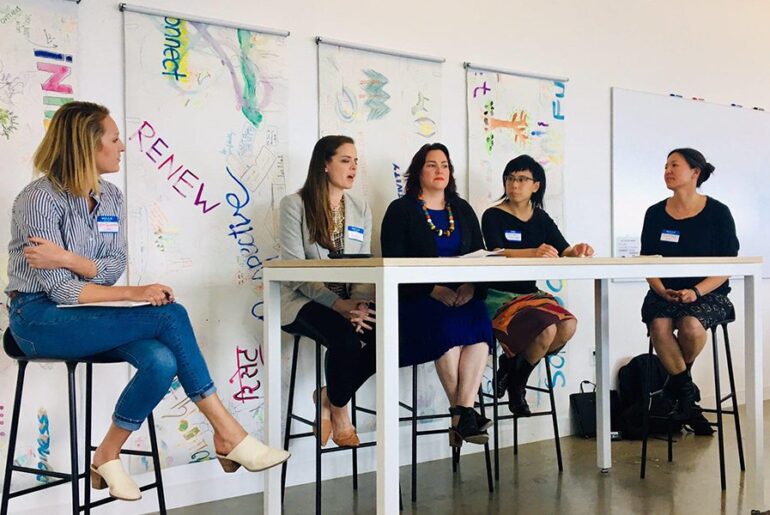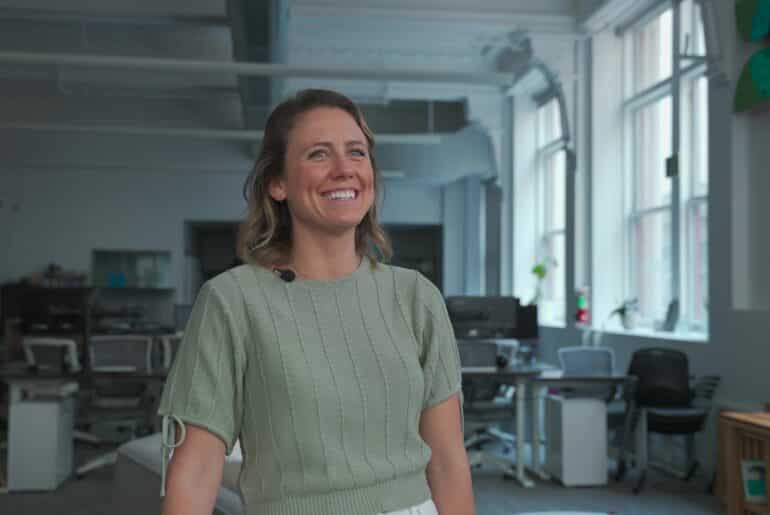No matter your role in a building project – whether a manufacturer, specifier, architect, designer, owner, engineer, or contractor – you’re likely somehow involved in materials selection. This wide range of stakeholders, coupled with the continued growing industry buzz around materials, can make it difficult to make smart decisions regarding materials on your project.
To cut through the noise, GIGA launched the MATERIALIZE Workshop Series. The series brings together experts in materials for a cross-sector dialogue on where we’ve been, where we are, and where we’re going with materials, as driven by existing product schemes and building certifications. Providing insights for both sustainability-focused and traditional construction industry professionals, the events aim to provide an inclusive pathway for all industry stakeholders to gain exposure to sustainable product sourcing resources and the benefit of connected performance data accessibility, which will ultimately help facilitate healthier material selection across the board.
Consider these thoughtful insights from the MATERIALIZE Bay Area event when specifying materials for your next project.
#1: AGGREGATE PROJECT MATERIALS GOALS
Frances Yang (Arup), Jessian Choy (SF Dept. of the Environment), Katie Bachman (Stok), Jenelle Shapiro (Webcor), and Emily Naud (SFO) came together for a female powerhouse panel on how to aggregate materials goals for collaborative and seamless project delivery. Between sustainability, durability, price, lead time, and more, there are many considerations to take when setting goals to specify your project’s materials. This means that determining priorities is crucial, as is understanding who’s driving them and how to work as a team to achieve them (a lack of QA/QC also came up as a common challenge for project success across all panelists).
The San Francisco International Airport (SFO) Terminal 1 Boarding Area B was used as an extensive case study for successful project delivery. As a high-profile project with ambitious sustainability and programming requirements, among others, success hinged on bringing a complex set of elements together to execute them effectively. Using a combination of the mindful MATERIALS Library, an in-house tracking tool, and an auto-populating submittal cover smartsheet, the project team successfully achieved the LEED v4 Materials Credits as part of their LEED v4 Gold certification. The AIA and Arup’s Prescription for Healthier Building Materials details this case study in depth on p. 65.
#2: ALIGN SUSTAINABILITY AND PERFORMANCE PRODUCT CRITERIA
Steve Kooy (Intertek), Rebecca Best (GIGA), Francis Yang (ARUP), and Katie Bachman (Stok) next facilitated a work session on the intersection of material performance and sustainability for smarter, more seamless specifications. Focusing on select product types (including flooring, interior and exterior paints/ coatings/ adhesives/ sealants, insulation, furniture, cabling/ wiring, windows/ doors, and drywall), participants delved into identifying priorities when specifying each product type. With the audience’s diverse knowledge of common challenges, participants were able to discuss how to overcome them.
#3: USE MINDFUL MATERIALS FOR STREAMLINED DATA ACCESSIBILITY AND FILTERING
The breakout session described above begged the question: how do you get the information you need to specify materials in the first place? Platforms like mindful MATERIALS (mM), powered by Origin, bridge the gap between performance and sustainability data, providing solutions to challenges faced in materials specification for all project stakeholders.
For project teams and industry professionals, the mM Product Library provides a database of relevant products that meet health and/or sustainability baseline criteria, vetted by the industry for the industry. Clearly communicating transparency and optimization information about building products on a free-access platform streamlines the specification process and allows for efficient data accessibility. There is no cost for manufacturers to connect to relevant approved, live data integrated directly by certifications and declarations like Cradle2Cradle, Declare, CRI GreenLabel Plus, SCS Indoor Advantage, Intertek’s Clear Air, EPDs, Level, Global GreenTag, HPDs, and more. Users can trust the reliability of the connected certification data accessed at any time on Origin or mM because it is sourced directly from the Reporting Body.
For manufacturers, GIGA’s platform Origin is the conduit to submitting products in the mM Library. Once you submit product information and documents through Origin, an mM product review team will evaluate if products meet the baseline criteria for the mM Library. Manufacturers can also showcase performance, technical, specification, and marketing documentation in their Origin account, which can be seen in any Origin-connected Libraries, like mM.
#4: GET EDUCATED TO IMPLEMENT INTERNET OF THINGS (IoT)
Dan Burns (Superior Essex) and Amy Shen (Arup) then engaged participants in a discussion of the future of IoT in building projects. While audience polls indicated that nearly half of attendees didn’t think IoT would play a role on future projects, the same people also had little idea of what IoT even meant in the building industry. Thus, perceptions of the future of IoT use and relevance in the market were largely based on the lack of baseline knowledge people had of IoT.
Given the lack of existing education, Superior Essex laid the groundwork for IoT and smart cabling for enhanced performance, sharing what it is, where it’s already implemented, and what we can achieve with it. As it turns out, IoT is already all around us in our modern buildings. Typical elements like smart lighting and plumbing sensors help illustrate the baseline for IoT, with much room for growth.
In line with baseline building elements, Superior Essex closed with a dive into material health from a cabling perspective. As a component required in every building, it’s easy to overlook the potential healthy and sustainable attributes of cabling and instead make decisions solely based on performance, but that misses important value. For example, digital building applications supported by Superior Essex’s Power-over-Ethernet (PoE) communication cable deliver a host of sustainable benefits for the built environment, from increased energy efficiency and lower capital and operating costs to improved occupant well-being and productivity. Their Division 27 communication cable also provides both power and data in a low-voltage DC-powered design to enable enhanced user controls, building automation, and predictive systems. Holding EPD, HPD, Declare, and Living Product Challenge certifications, these products can contribute to LEED, WELL, and Living Building Challenge projects. With this improved understanding of smart and sustainable technologies, you can make better cabling choices that add value to your projects.
WANT MORE MATERIAL(S)?
The MATERIALIZE Workshop Series is headed to Denver in May 2019. Register to attend and be on the lookout for the series in future cities. In the meantime, drop us a line to discuss anything in the materials realm with Stok’s materials specialists.



